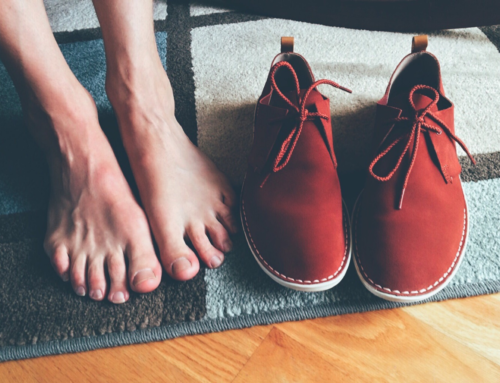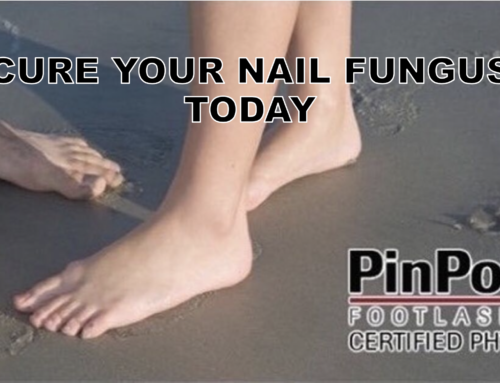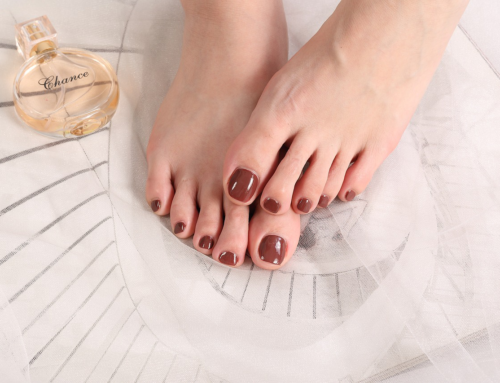People can get toenail fungus from nail salons. Nail salons are a common destination for those seeking some relaxation and beautification time. While salons can be fun to visit, it is important to be aware of the risks that come with their practice. Toenail fungus is a common, very contagious condition, and nail salons can often be breeding grounds for fungus. There are precautions you can take before going to a nail salon. Although it is common to get toenail fungus from nail salons, there are many treatment options.
There are many risks of fungus. Nail salons are a common destination for those seeking some relaxation and beautification time. These salons provide nail services like manicures, pedicures, and cosmetic nail enhancements. While salons can be fun to visit, it is important to be aware of the risks that come with their practice. If you are cognizant of these risks, they should be easy to avoid. A very common concern that people have when visiting nail salons is toenail fungus. Toenail fungus is a common, very contagious condition, and nail salons can often be breeding grounds for fungus.
Risks of Nail Salons
The risk of nail fungus from nail salons comes with the tools that nail technicians use. These tools, like nail clippers, scissors, and foot baths, come in direct contact with each customer’s nails. The fungus can survive on the surface of these nail tools. If a nail technician uses these tools on someone with a nail fungus, fungal spores can collect on their tools. This isn’t a problem as long as the nail technician sterilizes their tools between customers. However, not all nail technicians or nail salons will do this. If a nail technician uses these infected tools on a patient without fungus, the fungus can easily spread.
There are a few ways to determine if a nail salon is taking proper care to sterilize its tools. Your nail technician shouldn’t use tools that have been left on their desk when you arrive. The tools they use on you should be newly sterilized in an autoclave or in a sterile bag. The best way to determine is to ask your nail technician what precautions their salon takes to prevent fungal contamination.

Can I get nail fungus from Nail Salons?
It is all too often that a hidden review for the majority of nail salons will complain that visiting that establishment resulted in an infection. These infections can be bacterial or fungal. While bacterial infections can usually be treated with antibacterials, fungal infections tend to linger unless treated. The reason that nail salons are so notorious for nail fungus is solely due to sanitation problems.
Salons are usually guilty of reusing instruments on their hundreds of clients, and only clean their foot baths once a day, if even that. Simply washing with water is unfortunately not enough, since fungal spores are not killed by water or soap, and the spores can also get stuck in the pipes of the foot baths.
Sharing Nail Polish
Another way is caused by sharing nail polish with someone who already has nail fungus. The fungal spores become embedded on the brush, and when applied, they will be transferred via touch. It can be stored inside the nail polish bottle and can be applied to noninfected nails to increase the chances of getting
How do I avoid nail fungus at nail salons?
So what can you do to minimize your chances of getting nail fungus without giving up your pedicures entirely? For one, try to find an establishment that uses fresh instruments and foot baths on all clients, or uses a medical-grade autoclave to sterilize their instruments. This helps since the high temperatures in autoclaves kill any existing fungal spores. If you are unable to find such a salon, bring your own instruments and nail polish to use, and insist that the nail technician wear gloves.
What to look out for
The next time you get a pedicure, make sure to choose a safe nail salon. There are different factors to consider when choosing a nail salon.
Check the nail salon’s credentials before going in for a pedicure. Also, check the nail technician’s credentials. Certified technicians studied in approved cosmetology schools and have completed 500 to over 1000 hours of practice. These nail technicians are educated on how to sanitize tools and best practices to prevent infections.
If you have toenail fungus or its symptoms, contact us to schedule a FREE consultation with one of our doctors. We have over 150 clinics nationwide.

How Pedicures Can Lead to Nail Fungus
Nail fungus thrives in warm, moist environments, making salons and foot baths potential hotspots if they aren’t properly cleaned. Here are common ways nail fungus can spread:
-
Unsanitized Foot Baths
If foot baths aren’t cleaned thoroughly between clients, fungal spores can live in the water and transfer to your feet. -
Shared Tools
Nail clippers, nail files, and buffers can spread fungus from one person to another if they aren’t properly sterilized between uses. -
Aggressive Cuticle Cutting
Cuticles protect the nail bed. Cutting or pushing them back too harshly can create tiny openings for fungus to enter. -
Polish Bottles Used on Multiple Clients
The brush from a shared polish bottle can pick up fungal spores from one person and transfer them to the next. -
At-Home Pedicure Risks
Even at home, using dirty tools, soaking feet in reused water, or cutting cuticles too closely can increase your risk.
Once fungus enters the nail, it can be stubborn. A fungus infection leads to brittle, discolored nails that are difficult to treat without professional help.
How to Enjoy Pedicures Safely
You don’t have to give up pedicures forever to protect your nail health. Here’s how to reduce your risk:
-
Choose a Clean, Licensed Salon
Look for salons that use hospital-grade sterilization and disposable liners in foot baths. -
Avoid Shaving Before Pedicures
Shaving can create tiny cuts on your legs, making it easier for fungus to enter. -
Say No to Aggressive Cuticle Cutting
Ask your technician to gently push back cuticles rather than cutting them. -
Use Flip-Flops in the Salon
Avoid letting your bare feet touch communal surfaces. -
Consider Skipping Polish During Treatment
If you’re dealing with a fungal infection or undergoing treatment, keeping nails bare helps you monitor progress and keeps the area clean.
Step-by-Step Pedicures at Salons Protocol
- Technicians remove old nail polish with nail remover. Then soften the nails and cuticles with a foot bath.
- Technicians use a metal or orange stick to clean the hyponychium to get rid of any debris.
- Technicians use cuticle remover or other instruments to remove cuticles.
- If there are any stains on the nail, they may apply a bleaching agent. And if there is any ridging on the nail plate, they may buff the nail.
- Then, nail technicians apply a base coat, nail polish, and topcoat to the nails.
Here we see a possible problem. The hyponychium and cuticle that are removed in steps 2 and 3 provide waterproof protection, which seals the nail from infection and the outside world. Removing these barriers could cause inflammation, Toenail fungus/bacteria/virus infection, and separation of the nail plate and nail bed.
Additionally, we also have to be careful with the infection from the multi-use instruments, such as nail clippers and cuticle nippers. The CDC considers these instruments as “critical items” that are associated with a high risk of infection.
Although the sterilization of these instruments is crucial, not all nail salons follow a recommended protocol. Also, there are not enough state inspectors to monitor the numerous salons across the US to make sure they are following sanitation guidelines.
For these reasons, it is important for people, especially those who are prone to getting nail infections or other conditions, to purchase and bring their own instruments to their salon so that the risk of infection decreases.
“Medi-Pedi”
These days, many physicians are opening up medical-based pedicure salons. Those salons are safer infection-wise and are preferable for those with a higher risk of nail infection, such as people with diabetes, thin blood, or immunocompromised patients etc.
Choose your salon wisely and keep yourself from nail infections.
Pedicure Break?
When you get a keratin granulation, the best thing to do is to take a “pedicure break” before the symptom gets worse. Usually, you should keep yourself from getting a pedicure for at least three weeks, depending on how bad your condition is. If you keep wearing pedicures despite the condition, you may experience excessive dryness, discoloration, or ridging on your toenail.
Taking pedicure breaks has other bright sides as well. When you apply a pedicure, you have to remove it. And when you remove a pedicure, you usually use nail remover instead of using just water and soap. The overuse of a nail remover, which often contains acetone, can damage your nails by causing them to crack, dry, and peel.
Unhealthy Nails
These unhealthy toenails could be more susceptible to the outside environment, where there are thousands of fungi and bacteria. In order to keep our toenails healthy, pay good attention to them. To do that, don’t leave the pedicure for a long time, and consider taking a pedicure break once in a while.
Laser Treatment for Toenail Fungus
As you can see, tips for healthy feet without toenail fungus can be easy to find. If you have caught nail fungus, it can be easily treated using the FDA-approved PinPointe laser. It typically only takes one treatment. Other treatments, like topical solutions and oral medication, are not as effective. Topical solutions have a very low cure rate. This is because the solution does not penetrate through the nail bed. This is because it can lead to liver toxicity. You would need to have consistent blood tests throughout taking the medication.
At Laser Nail Therapy, our nail doctors in Beverly Hills, CA, and the greater Los Angeles area recommend this treatment for toenail fungus. The PinPointe Laser treatment has the highest cure rate in the market. It has no side effects and no recovery period. As a result, you can go about your daily activities right after the treatment. Also, there’s no pain. If you have any signs of toenail fungus, call us at (800) 672-0625 at our Beverly Hills, CA location. Visit our website for more information on our doctors at one of our over 150 locations.





